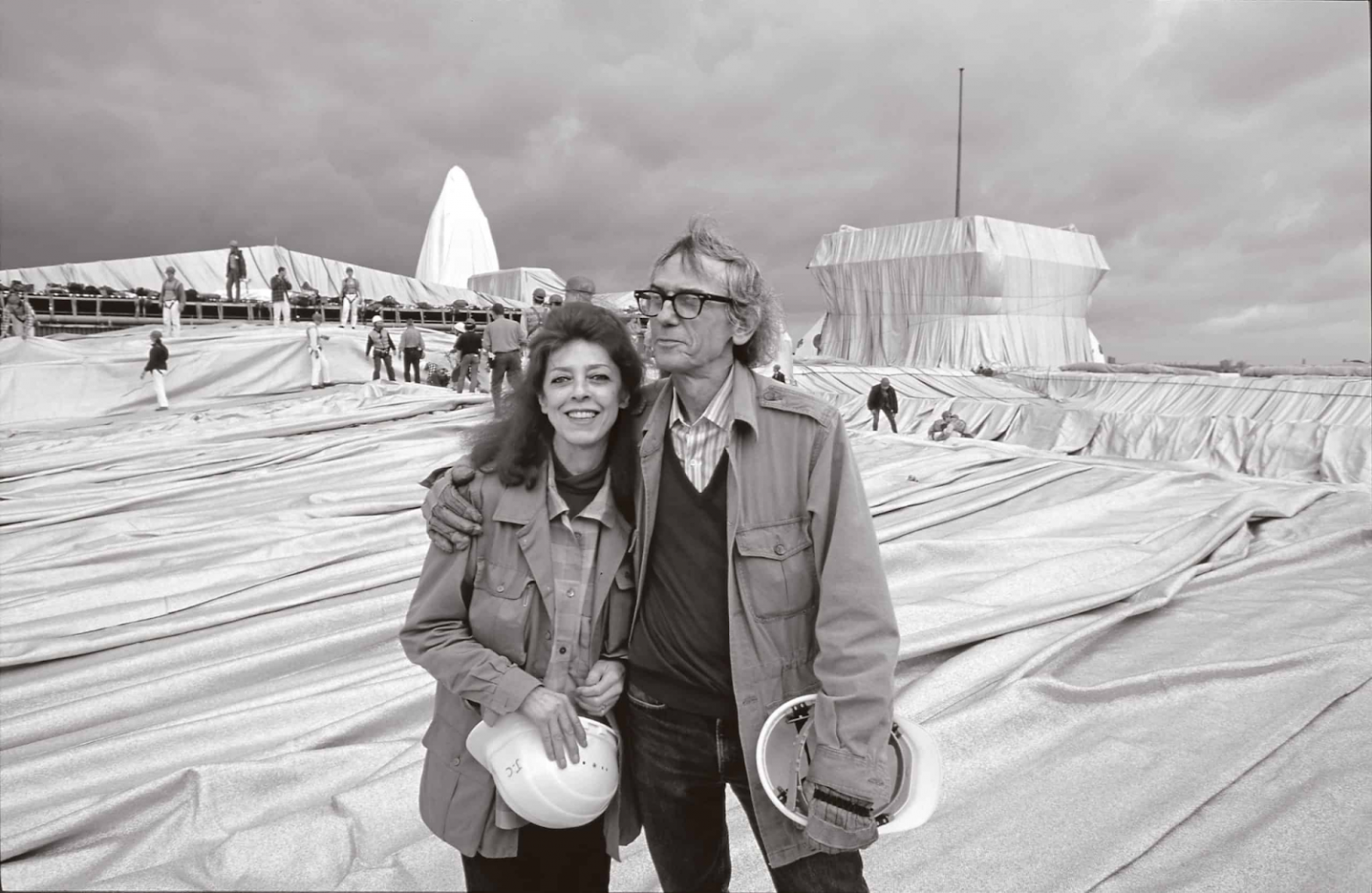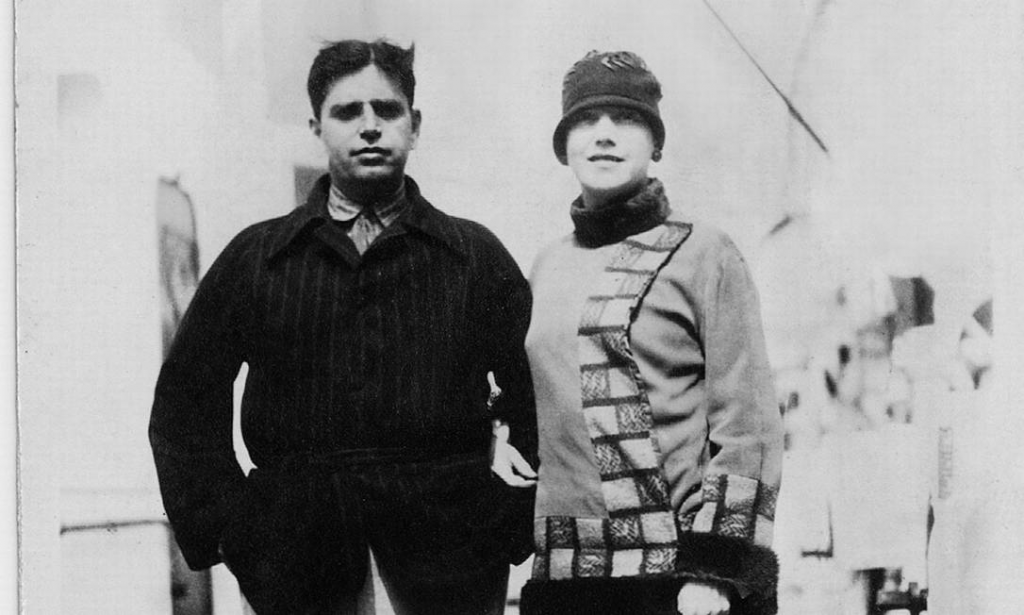
The artist couples who marked the history of art 2
The artist couples who marked the history of art 1
Christo and Jeanne-Claude
Christo (1935-2020) and Jeanne-Claude (1935-2009), from Bulgaria and France respectively, married in 1962, four years after meeting. They worked together until Jeanne-Claude's death in 2009. Known for creating monumental, temporary works that incorporated fabrics and other materials into landscapes and public spaces, they created stunning visual experiences and powerful reflections. While Christo had aspirations of absurd proportions, Jeanne acted as producer in order to play a fundamental role in transforming Christo's vision into tangible art. This partnership revolutionized the large-scale creation and transformation of public spaces.

Tarsila do Amaral and Oswald de Andrade
Tarsila do Amaral (1886-1973) and Oswald de Andrade (1890-1954), from Brazil, also formed a remarkable couple of artists. Tarsila was one of the most important painters of Brazilian modernism, while Oswald was a central critic and writer in literary modernism. They met in 1920 and married in 1926. Their relationship not only resulted in a marriage, but also in an intellectual partnership that resulted in the development of the Anthropophagic Movement in 1928, when from their joint reflections Oswald wrote the Anthropophagic Manifesto and Tarsila painted “ Abaporu.” They sought, each in their own artistic language, to value Brazilian roots with their international influences. Although the relationship ended in 1930, the legacy of the partnership is essential for understanding Brazilian modernism.

Georgia O'keeffe and Alfred Stieglitz
Georgia O’keeffe (1887-1986) and Alfred Stieglitz (1864-1946), from the United States, met in 1916 and married in 1924, forming a lasting personal and professional relationship. Stieglitz was a photographer and a supporter of O’Keeffe’s work, which magnified flowers and landscapes with his singular vision and modern gesture. While he helped her gain recognition in the art scene by promoting her image and work; she, in turn, inspired him to a bold and innovative approach that defied conventions of the time.

Gabriele Münter and Wassily Kandinsky
Gabriele Münter (1877-1962) and Wassily Kandinsky (1866-1944), from Germany and Russia respectively, were a notable duo in the German expressionist movement and the development of abstract art, having worked together in founding the expressionist group Der Blaue Reiter ( “Blue Knight”). They met in 1902 and began a personal and artistic relationship that lasted twelve years. Münter, a talented and independent artist, was influenced by Kandinsky's style, which sought a freer and more non-representational visual language, both shared the desire for an emotionally expressive artistic language.
These artist couples reveal to us the existence of a powerful intersection between love and art, which intertwine in different ways, deeply impacting the artistic trajectory of each individual. Resulting in an enriching and transformative experience, both for artists and the public, this connection transcends and permeates the search for a link between life and art.


- December 25, 2025
SAM WILDE | The Imaginary Wilde Worlds Characters & Patterns

- December 25, 2025
“Ancestral Artist”: A Look at the Craft of Latin American Crafts



- December 25, 2025
Winner of the 13th Most Important Contemporary Art Prize

- December 25, 2025
Who threw it

- December 25, 2025
Malba Acquires the Daros Latinamerica Collection


- December 24, 2025
Gallery of Illustration by Pola Maneli – South Africa

- December 24, 2025
Art as Human Expression and Universal L…

- December 24, 2025
Art in the Street: When the City Become…

- December 23, 2025
Urban Art in Latin America

- December 23, 2025
Folk Art in Indigenous Communities of L…

- December 22, 2025
Graffiti as a Social and Political Lang…

- December 22, 2025
Graffiti – From the Street to Contempor…

- December 21, 2025
Contemporary Art and New Visual Narrati…

- December 21, 2025
Latin American Visual Art as a Space of…

- December 20, 2025
Painting in the Americas: Origins and E…

- December 20, 2025
Key Latin American Artists in the Anti-…

- December 18, 2025
Artistic Movements and Expressions of R…

- December 18, 2025
Art and Anti-Imperialism in Latin Ameri…

- December 17, 2025
Visual Art in El Salvador: Between Memo…

- December 17, 2025
Visual Art in Cuba: A Window to Identit…

- December 16, 2025
Visual Art in Colombia: Diversity, Memo…

- December 16, 2025
Visual Art in Venezuela: Modernity, Ide…

- December 15, 2025
Visual Art in Paraguay: Tradition, Memo…

- December 14, 2025
Visual Art in Chile: Memory, Critique, …

- December 14, 2025
Visual Art in Bolivia: Ancestry, Resist…

- December 13, 2025
Visual Art in Peru: Ancestral Tradition…

- August 29, 2023
The history of Bolivian art

- February 19, 2024
Analysis and meaning of Van Gogh's Star…

- January 28, 2024
Culture and Art in Argentina

- September 25, 2023
What is the importance of art in human …

- September 23, 2023
What is paint?

- August 23, 2023
The 11 types of art and their meanings

- August 10, 2023
14 questions and answers about the art …

- September 23, 2023
Painting characteristics

- August 30, 2023
First artistic manifestations

- January 12, 2024
10 most beautiful statues and sculpture…

- September 23, 2023
History of painting

- March 26, 2024
The importance of technology in art1

- March 26, 2024
Cultural identity and its impact on art…

- July 13, 2024
The impact of artificial intelligence o…

- April 07, 2024
Graffiti in Latin American culture

- April 02, 2024
History visual arts in Brazil

- April 06, 2024
History of visual arts in Ecuador

- August 16, 2023
The 15 greatest painters in art history

- October 18, 2023
History of sculpture

- November 21, 2024
The Role of Visual Arts in Society

- February 19, 2024
Analysis and meaning of Van Gogh's Star…

- August 13, 2023
9 Latino painters and their great contr…

- August 23, 2023
The 11 types of art and their meanings

- August 10, 2023
14 questions and answers about the art …

- August 27, 2023
15 main works of Van Gogh

- August 29, 2023
The history of Bolivian art

- January 28, 2024
Culture and Art in Argentina

- November 06, 2023
5 Latin American artists and their works

- September 23, 2023
Painting characteristics

- September 23, 2023
What is paint?

- September 25, 2023
What is the importance of art in human …

- March 26, 2024
Cultural identity and its impact on art…

- August 30, 2023
First artistic manifestations

- December 18, 2023
10 iconic works by Oscar Niemeyer, geni…

- January 20, 2024
What is the relationship between art an…

- January 12, 2024
10 most beautiful statues and sculpture…

- August 24, 2023
The most famous image of Ernesto "Che" …

- October 30, 2023
Characteristics of Contemporary Art

- May 26, 2024
Técnicas de artes visuais

- August 22, 2023


